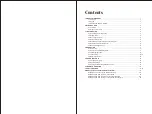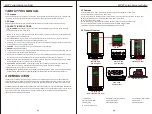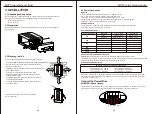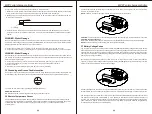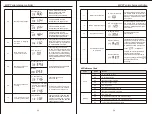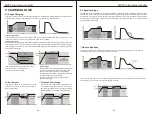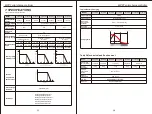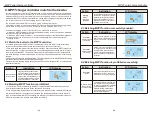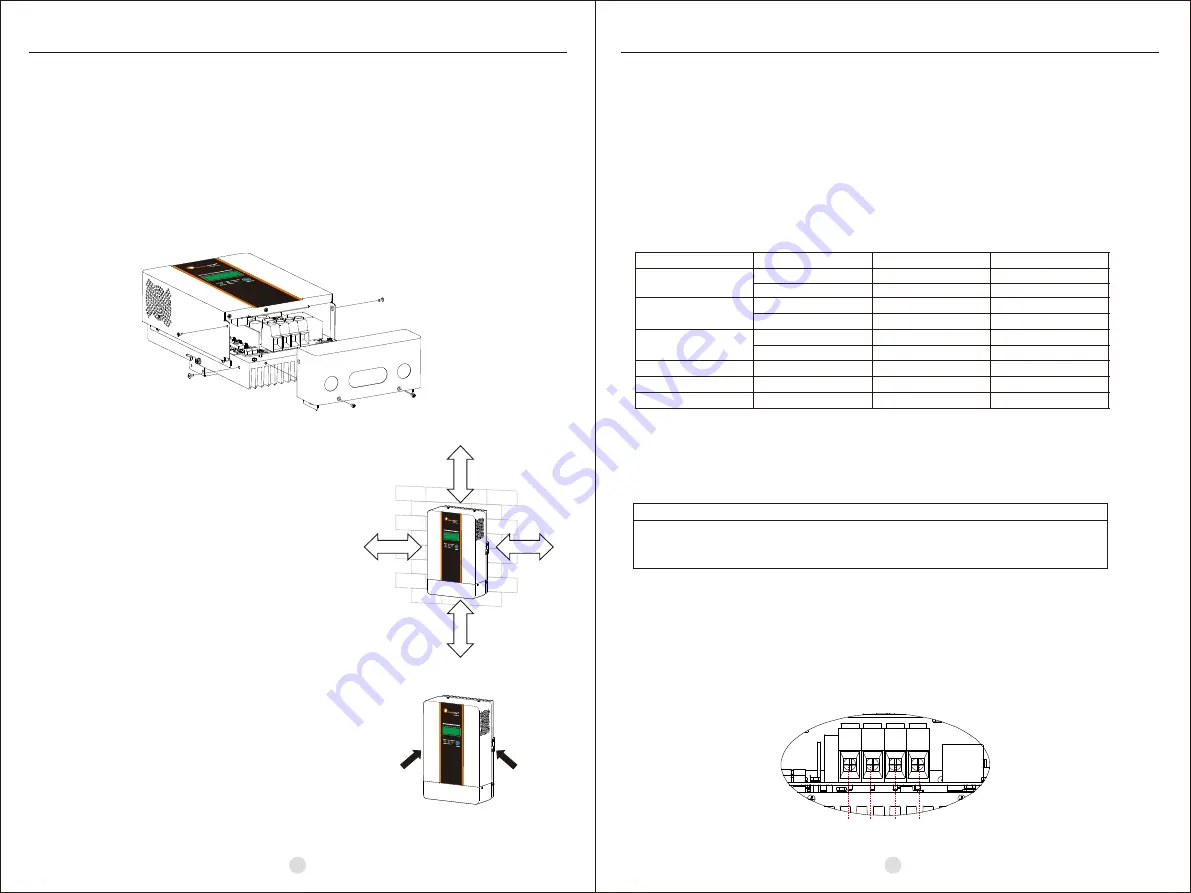
03
04
Install the unit to the wall by screwing two screws.
Refer to right chart.
Overcurrent Protection and Disconnects
CAUTION:
Circuit breakers or fuses must be installed in both battery and solar
circuits.
The battery circuit breaker or fuse must be rated to 125% of the maximum current or more. The recommended
breaker/fuse rating for use with the charger is listed in the below table.
Recommended breaker rating:
Minimum battery circuit breaker/fuse rating
1.25 x 30Amps = 37.5 Amps 1.25 x 45Amps = 56.3 Amps
1.25 x 60Amps = 75.0 Amps 1.25 x 80Amps = 100.0 Amps
1.25*100Amps = 125Amps 1.25*120Amps = 150Amps
A disconnect is required for the battery and solar circuits to provide a means for removing power from
the charger. Double pole switches or breakers are convenient for disconnecting both solar and battery
conductors simultaneously.
Connect the Power Wires
The solar modules can produce open-circuit voltages in excess of 100 Vdc when in sunlight. Verify if solar
input breaker or disconnect has been opened (disconnected)before connecting system wires.
WARNING: Shock Hazard
3. INSTALLATION
3.3 Mounting the Unit
3.2 Preparation
Before installation, please inspect the unit. Be sure that nothing inside the package is
damaged. You should have received the following items inside of package:
•Solar charge controller x 1
•User manual x 1
Before connecting all wirings, please take off wiring box cover by removing screws as
shown below.
3.1 Unpacking and Inspection
Consider the following points before selecting where to install:
• This solar charge controller is designed in IP31 for indoor applications only.
• Do not mount the unit on flammable construction materials.
• Mount on a solid surface
• Install this charger at eye level in order to allow the LCD display
to be read at all times.
• For proper air circulation to dissipate heat, allow a
clearance of approx. 20 cm to the side and approx. 50 cm
above and below the unit.
• The ambient temperature should be between 0°C and 55°C
to ensure optimal operation.
• The recommended installation position is to be adhered to
the wall vertically.
5
0
C
M
5
0
C
M
20CM
20CM
3.4 Power Connection
The four large power terminals are sized for 14 - 2 AWG (2.5 - 35
mm 2 ) wire. The terminals are rated for copper and aluminum
conductors. Use UL-listed Class B 300 Volt stranded wire only. Good
system design generally requires large conductor wires for solar module and battery
connections that limit voltage drop losses to 2% or less.
The table below provides the recommended minimum wire size allowed for the charger.
Wire types rated for 75°C and 90°C are listed.
Minimum Wire Size
Wire size
Recommended wire size:
Typical Amperage Wire Type 75° °C Wire 90° °C Wire
Copper 4 AWG (25 m
㎡
) 6 AWG (16 m
㎡
)
Aluminum 2 AWG (35 m
㎡
) 4 AWG (25 m
㎡
)
Copper 4 AWG (25 m
㎡
) 6 AWG (16 m
㎡
)
Aluminum 2 AWG (35 m
㎡
) 4 AWG (25 m
㎡
)
Copper 2 AWG (35 m
㎡
) 4 AWG (25 m
㎡
)
Copper 2AWG(35 m
㎡
) 2AWG(35 m
㎡
)
45A
80A
100A
120A
60A
PV+
PV-
BATTERY-
MPPT solar charge controller
MPPT solar charge controller
Copper 2 AWG (35 m
㎡
) 2 AWG (35 m
㎡
)
Copper 8 AWG (10 m
㎡
) 8 AWG (10 m
㎡
)
Aluminum 6 AWG (16 m
㎡
) 6 AWG (16 m
㎡
)
30A


